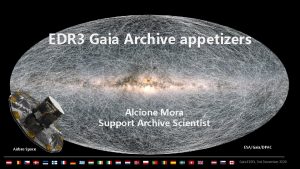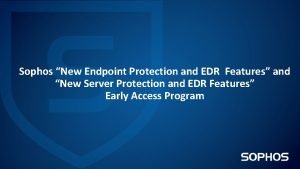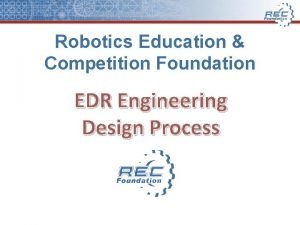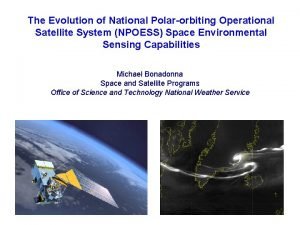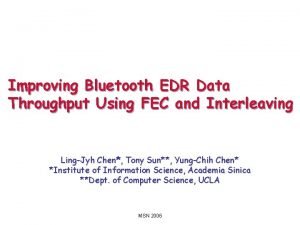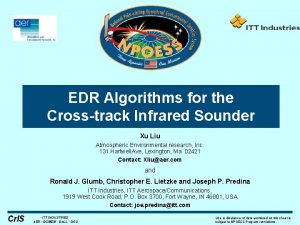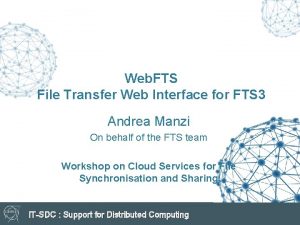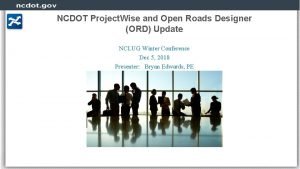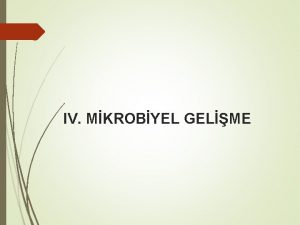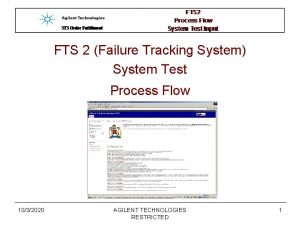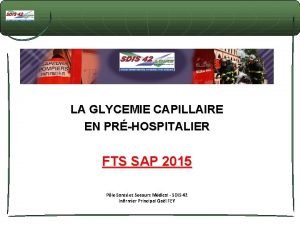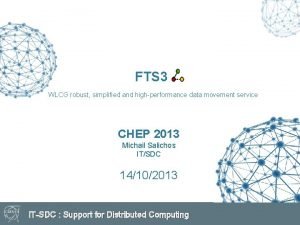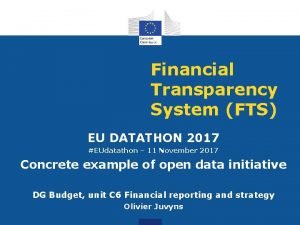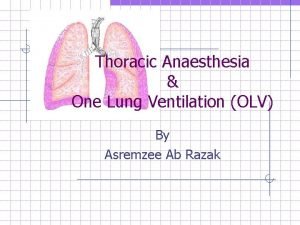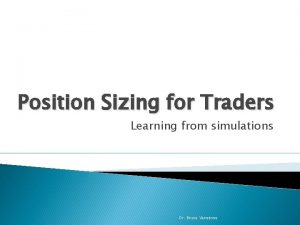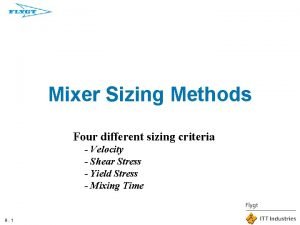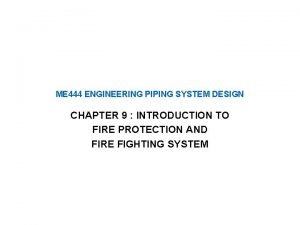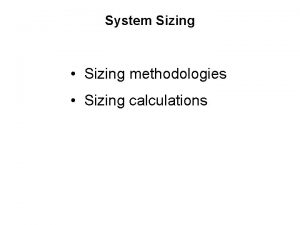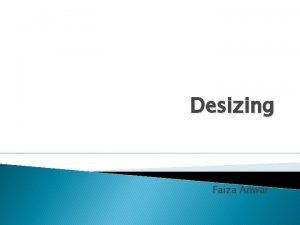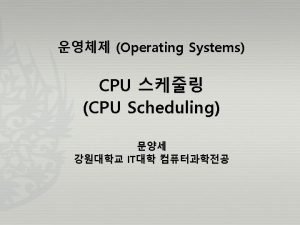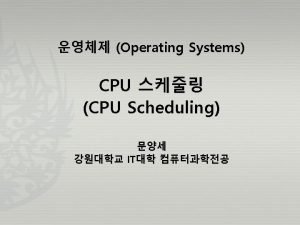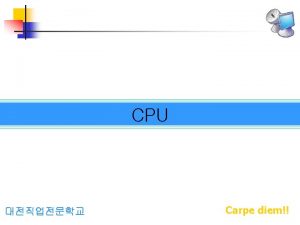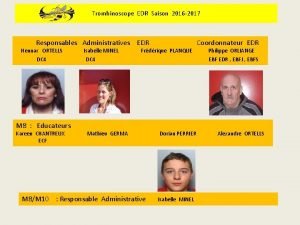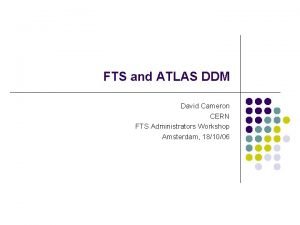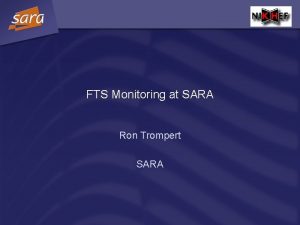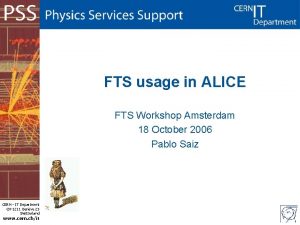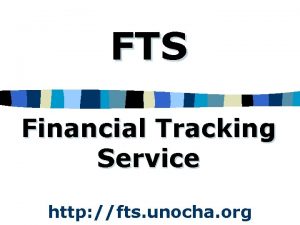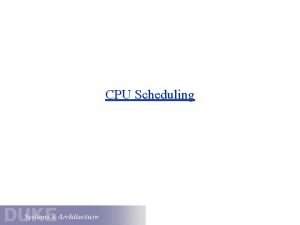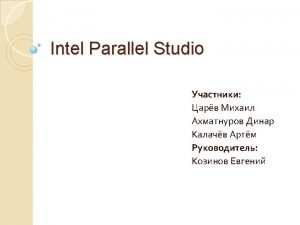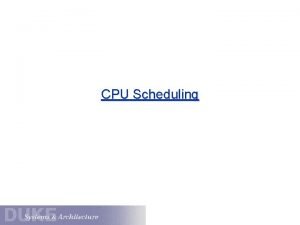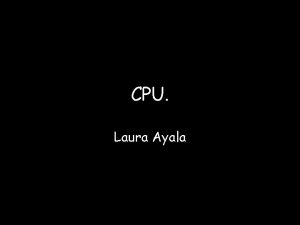CPU Sizing vs Latency Analysis FTS EDR Latency

















- Slides: 17

CPU Sizing vs. Latency Analysis FTS EDR Latency Simulation 5 March 2008 Doug Shannon

Contents • FTS Latency – Simulation & Analyses – – IDPS NPP Status ATDS/FTS Simulation Overview Example Simulation Results ATDS/FTS Demo • FTS HRD/LRD Latency Requirements: – SYS 013230 The LRD Field Terminal software, when installed on NPOESS representative hardware, shall produce Imagery EDRs within 2 minutes and all other EDRs specified in Appendix G within 15 minutes of receipt of mission data. Class 2 – SYS 013235 The HRD Field Terminal software, when installed on NPOESS representative hardware, shall produce Imagery EDRs within 2 minutes and all other EDRs specified in Appendix E, except for EDRs 40. 3. 1. 4, 40. 4. 10, 40. 7. 5, and 40. 7. 8, within 15 minutes of receipt of mission data. Class 2 FTS DRO Mar 05, 2008 2

IDPS NPP Status • IDPS NPP Build 1. 5 – 1 orbit NPP processing (101 mins) – 53 mins • Meets EDR latencies (117. 2 mins for 140 mins requirement) • Major speedups in DMS performance • Algorithm development & integration “ 95% complete” – Future Builds 1. 5. x. 1 (3 Q 08), B 1. 5. x. 2 (2 Q 09). • OMPS, NHF, combined Albedo, Bright Pixel • Move LSA Granulation out of VIIRS SDR (1. 5. x. 1) to improve IMG latency – ATDS/FTS getting new benchmarks on B 1. 5 algorithms • Faster processing? • Less algorithm sensitivity to scene content? FTS DRO Mar 05, 2008 3

Algorithm Timing & Dependency Simulation Field Terminal Latency Analyses • ATDS supports NPP, NPOESS/NPP & NPOESS performance analyses • FTS latency simulations differences: – Receives C 1/C 2 LRD or HRD in real time; no stored data • Sensors collect at 9. 1 & 5. 0 Mbps (average day/night) – Various FTS locations and weather/terrain conditions – Smaller EDR granules (NPP 85. 7 sec & NPOESS 42. 9 sec) – Processing Architecture • Split SDR - generate IMG sooner, after SDR Cal/Geo, before granulation • Pre-load SDR static ancil/aux tiles (TBD) to reduce latency FTS DRO Mar 05, 2008 • Assume no/minimal cross-granule dependency 4

VIIRS Cross-Granule Latency Tiers +3 SDR +2 +1 +4 +3 +5 +4 +2 FTS DRO Mar 05, 2008 +3 +4 +5 5

FTS Simulation (e. g. Omaha): 2 day 19 Passes with NPOESS S/C Contact Durations: Max 13. 1 mins Avg 10. 5 mins Min 2 mins? <4 mins 2. 3% 1330 1730 FTS Contacts with NPOESS S/C FTS DRO Mar 05, 2008 (1440 minutes = 1 days) 6

Orbital Position Defines Dynamic Scene Content in Sensor Data Orbital Position defines Sensor Nadir NCEP Weather Data Base Scene in VIIRS View FTS DRO Mar 05, 2008 Dynamic Processing Ocean Cloudy Snow/Ice 7

Impact of Weather/Terrain on FTS Data • Algorithm loading for Clear-Ocean is heaviest, 21% over average. • NCEP weather DB for Spring 2003 – 90 -100% ocean – 41% – 90 -100% clear – 8% – Clear & Ocean – 3% • User can’t select his weather/terrain – ATSD can analyze user FTS locations & help size for field conditions FTS DRO Mar 05, 2008 >90% Clear >90% ocean 8

Algorithm, Timing & Dependency Simulator: FTS IDPS and Algorithm Models S/W FTS DRO Mar 05, 2008 Science Algorithms H/W 9

Example ATDS Simulation results – Omaha FTS scenario • Peak demand (17 CPUs) not equal to CPU requirement. – 2. 6 GHz CPUs • CPU resources driven by contact length & S/C sensors. – No ATMS & Cr. IS on C 2 FTS DRO Mar 05, 2008 10

Example ATDS Simulation results – Omaha FTS scenario • EDR latencies are dynamic as scene content varies – Shows last VIIRS EDR for multiple granules FTS DRO Mar 05, 2008 11

Example ATDS Simulation results – Omaha FTS scenario • Latencies varied 1. 5 – 7. 7 mins – Imagery latency ~3. 3 mins FTS DRO Mar 05, 2008 FTS IMG 12

On-going ATDS/FTS Trades • Variable number of CPUs & processor speeds • Smaller VIIRS/Cr. IMSS granules – Science implications for processing areas and adjacency. • Weather/Terrain impact on IDPS Latency – Various FTS locations – Various weather & terrain conditions • SDR architectural trades • Selectable EDR configurations – HRD vs LRD algorithms – Generate high priority top EDRs only – Generate Imagery only FTS DRO Mar 05, 2008 13

VIIRS HRD vs LRD Algorithm Processing 11% 10% 0. 3% 2% 14%/10 2% 26% FTS DRO Mar 05, 2008 9% 1% 5% 5% 14

Summary • Due to algorithm scene sensitivity, highly variable weather/terrain are significant factors for latency and CPUs required. – Some new IDPS benchmarks show less than expected sensitivity. • Ongoing IDPS algorithm optimization are improving FTS latencies. – Improvements to IDPS Infrastructure (DMS) are very good but don’t apply directly to FTS. • We continue to add fidelity to our ATDS simulations, bounding nominal performance against worst-case scenarios in order to quantify system processor needs. FTS DRO Mar 05, 2008 15

Backups • 2005 back-to-back S/C contacts and gap analysis FTS DRO Mar 05, 2008 16

Back-to-back S/C Contacts • Overlapping S/C contacts don’t occur due to spacecraft orbital phasing. • Smallest gap of 10. 2 minutes has minimal impact to FTS latency. • Above 60 N there is a large increase in contacts and EDRs. Gap Time Between Contacts Max gap is 2. 1 orbits at equator 60 N FTS DRO Mar 05, 2008 Analyzed STK 1330/1730/2130 contact 17 data
